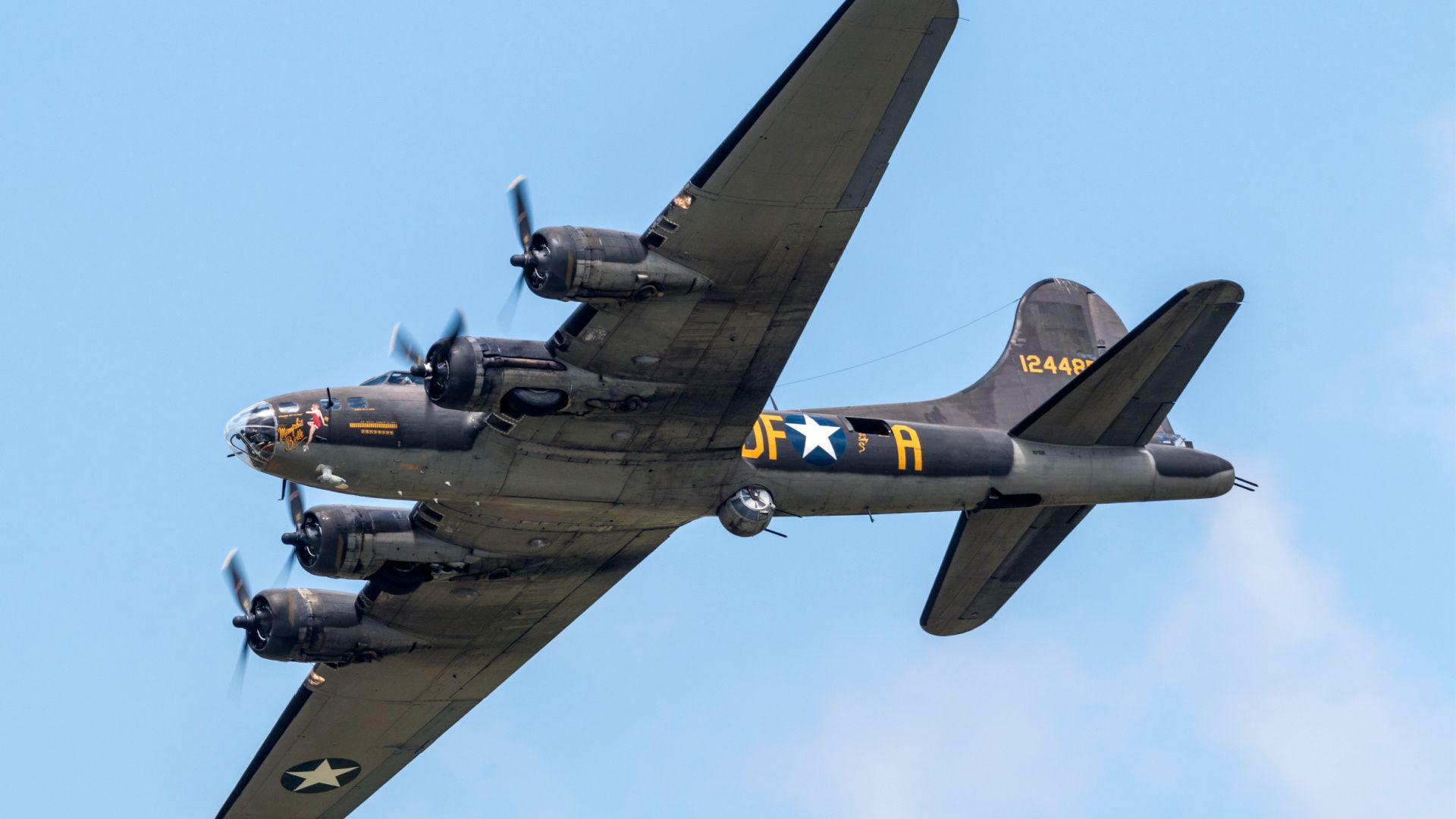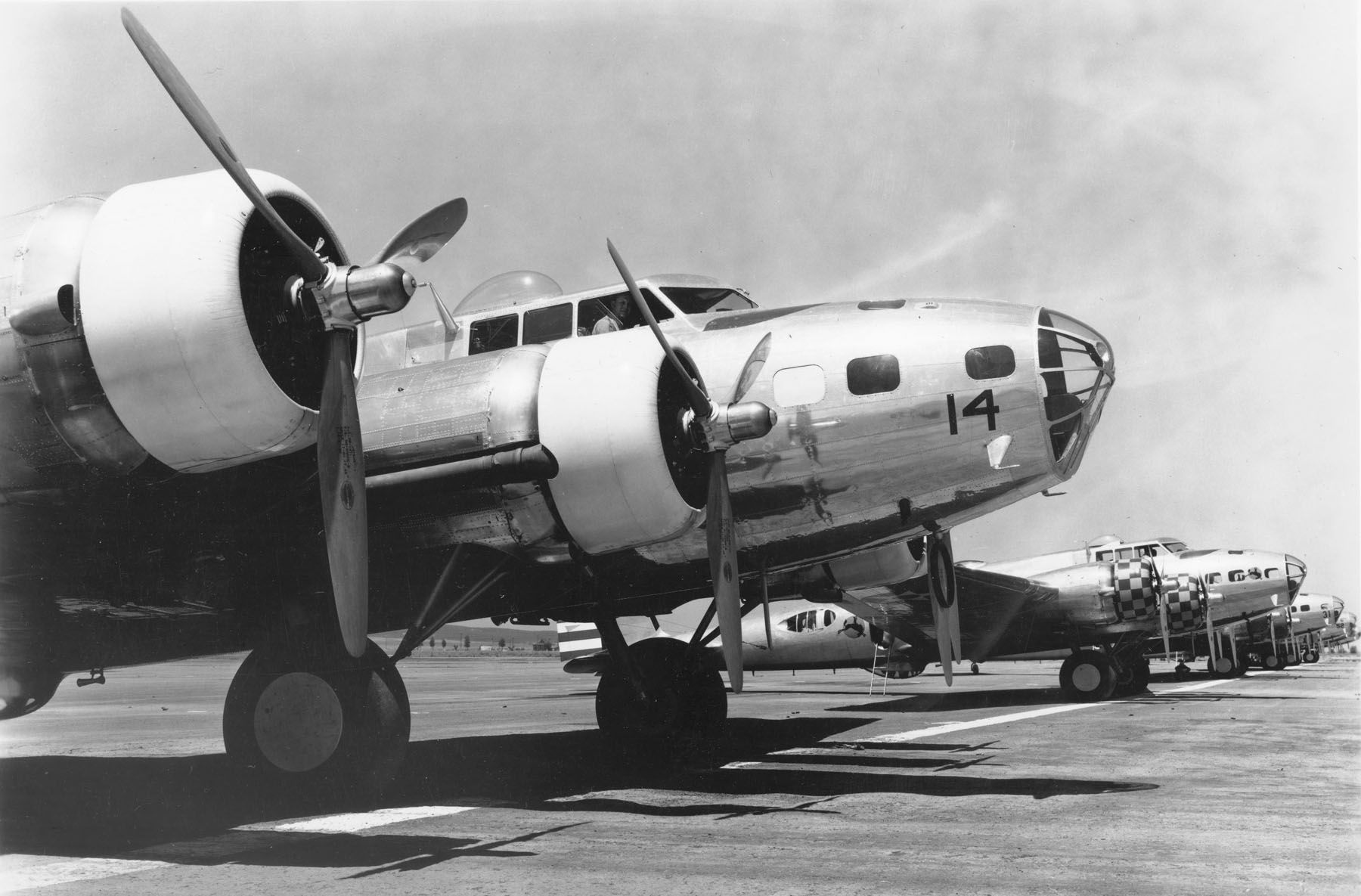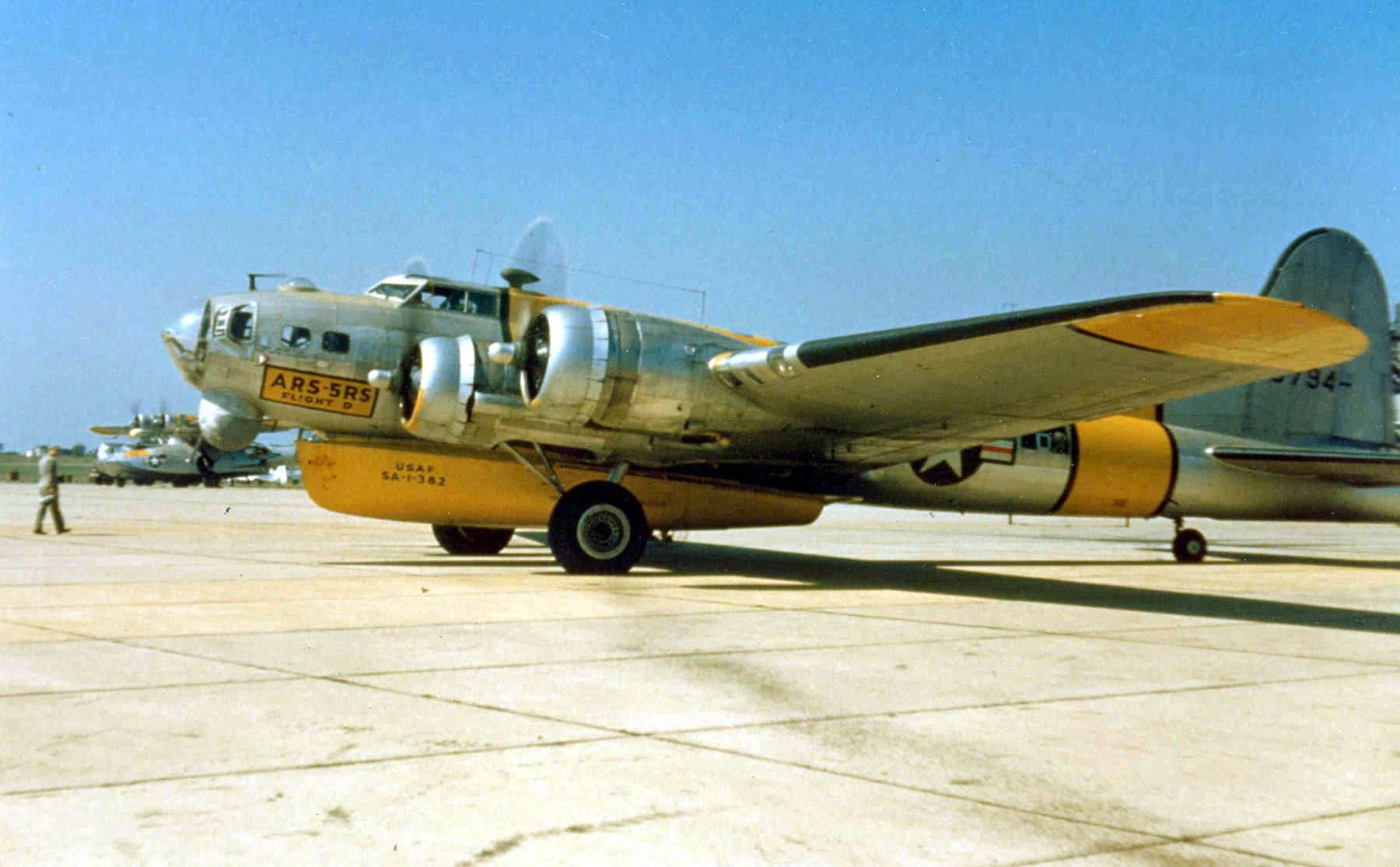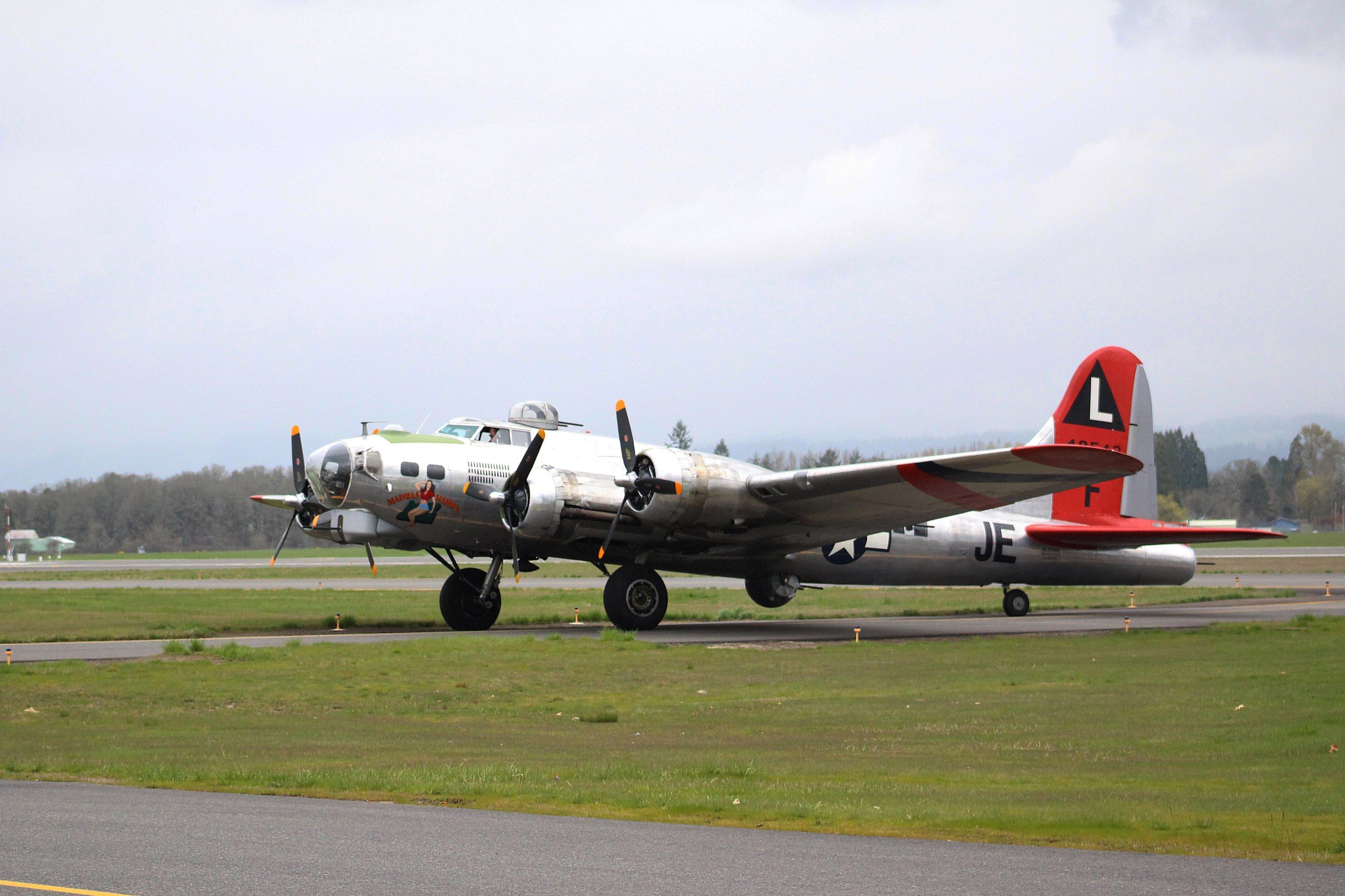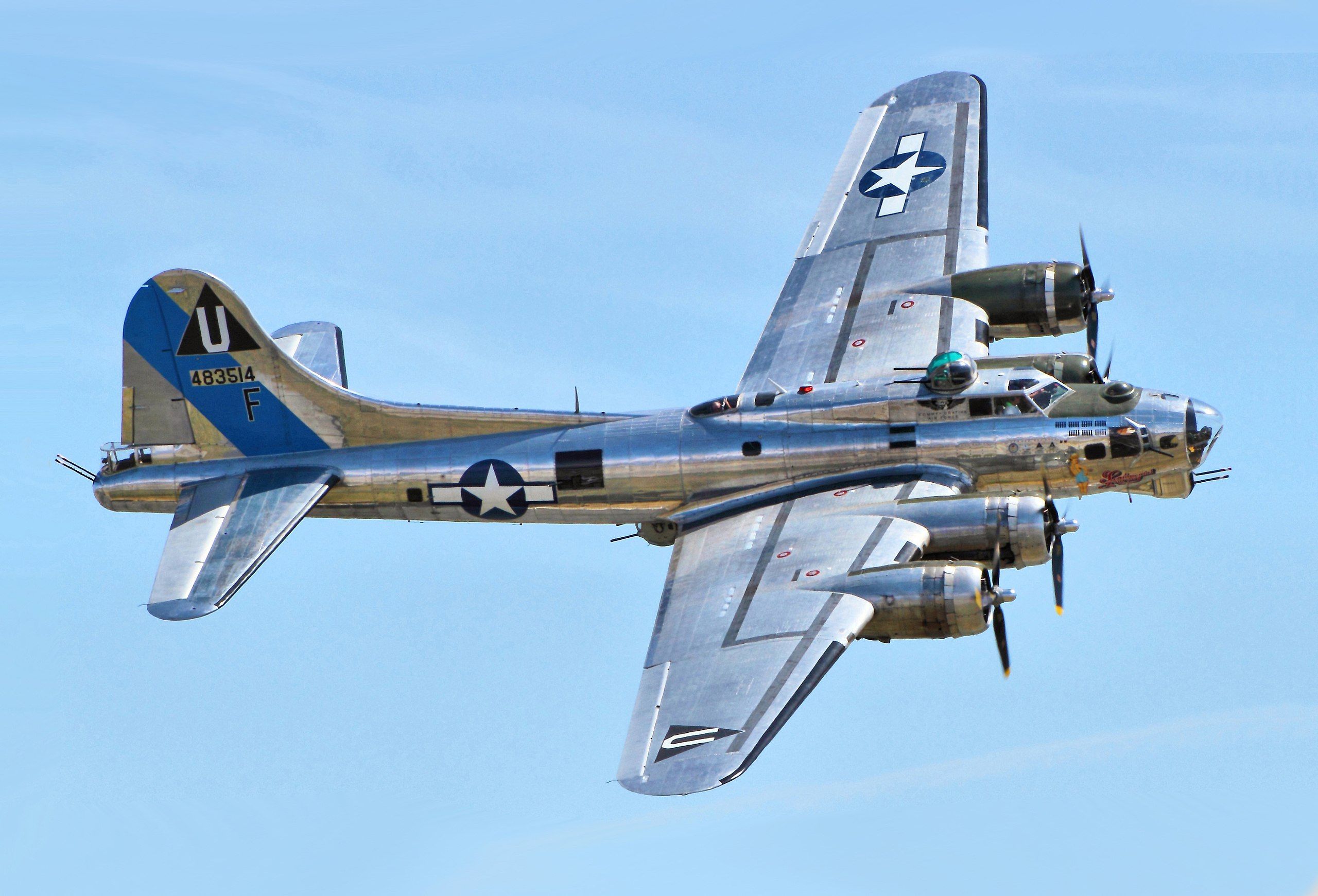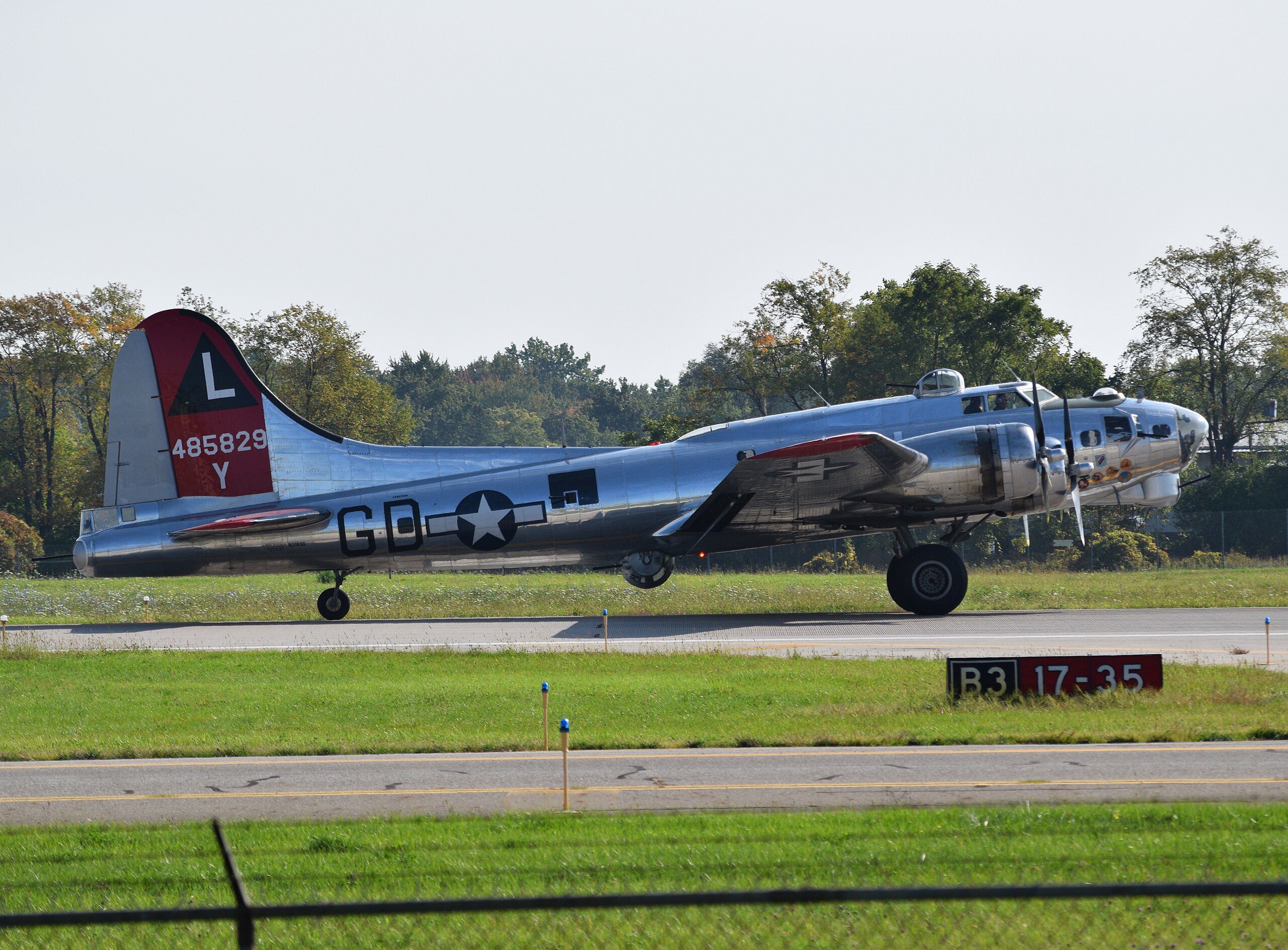Summary
- The Boeing B-17 ‘Flying Fortress’ was a significant bomber during World War II, with over 12,000 aircraft produced and serving around the world.
- After the war, many B-17s were scrapped, but some were used for transport, reconnaissance, or search and rescue missions. Some were even converted to operate as drones during atomic bomb tests.
- Today, only six B-17 aircraft are still flying, with five in the US and one in the UK. These aircraft have been restored and preserved, and not all of them retain their original names or liveries.
The Boeing B-17 ‘Flying Fortress’ played a vital role during the Second World War – it was a heavy and reliable bomber produced in huge numbers. Over 12,000 examples of the aircraft were rapidly built during the war years, serving around the world. It saw limited after-war use in the US (including for reconnaissance and air-sea rescue). However, many of the serving aircraft were scrapped, with only a handful remaining in flying condition today.
The B-17 ‘Flying Fortress’ during the Second World War
Boeing developed the B-17 starting in the mid-1930s as a replacement for the Martin B-10 bombers. It beat other manufacturers in this, having the aircraft flying in 1935. It offered a payload of 5,000 pounds and had a range of just over 2,000 nautical miles. The aircraft’s name, ‘Flying Fortress,’ was coined by a journalist due to its heavy armaments and protective capabilities.
The US Air Force tested and ordered the B-17 before the war, but production, of course, picked up significantly during the war. In total, 12,731 served with the US and the UK RAF. It was undoubtedly one of the most important bombers in the war years. It was not the only major US-built bomber, though – the Consolidated B-24 Liberator saw even greater production, with over 18,000 aircraft built. Being easier to damage and operating at a lower, more exposed altitude gave it the unfortunate nickname during the war of ‘Flying Coffin.’
The B-17 after the war
As with most aircraft, there were heavy losses during the war. Estimates are that almost 5,000 aircraft were lost. Those that survived mostly were taken back to the US and scrapped. Some carried on service as transport, reconnaissance, or search and rescue aircraft. Some were converted to operate as drone aircraft, including during atomic bomb tests. Most were withdrawn from military service during the 1950s, though.
The number of aircraft remaining on display or in active service varies often as aircraft are restored, taken off display, or moved in and out of operational state. Keeping planes this old airworthy, safe, and operational is no easy task.
Just six aircraft are still flying
As of early November 2023, there are six airworthy and registered B-17 aircraft still flying. Five of these are in the US, and one is based in the UK. There are 19 examples that have a current (November 2023) registration with the US FAA. These are not all airworthy, but some have the potential to fly again or have in the past. Note that many of these aircraft have been renamed in preservation – they do not necessarily have their original war names or liveries.
44-8453: Madras Maiden / Ye Olde Pub. This is part of the Erickson Aircraft Collection in Madras, Oregon.
44-85314: Sentimental Journey. This is displayed at the Commemorative Air Force Museum in Mesa, Arizona. It tours extensively for airshows. It features nose art of Betty Grable.
44-83546: Memphis Belle. This B-17 saw service after the war as a transport plane in Germany and then during the Korean War. It was restored in 1982 by the Military Aircraft Restoration Corporation and is based in Anaheim, California.
44-85740: Aluminium Overcast. This aircraft is owned and operated by the Experimental Aviation Association in Oshkosh, Wisconsin. This is another aircraft that tours extensively.
44-85829: Yankee Lady. This aircraft is located at the Yankee Air Force Museum near Ypsilanti, Michigan. This B-17 was delivered after the end of the war and only ever saw naval and coast guard service post-war.
44-85784: Sally B. This is the only active B-17 outside the United States and is based in the UK at the Imperial War Museum in Duxford, Cambridgeshire. It was used in the filming of the movie Memphis Belle in 1990. Sally B is registered with the UK CAA as G-BEDF.
Would you like to discuss more about the B-17, its service history, or survival today? Which of the remaining aircraft have you seen in the air? Let us know in the comments section below.
Sources: FAA

